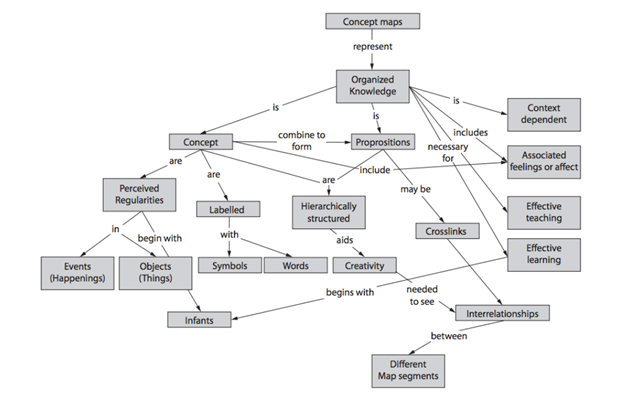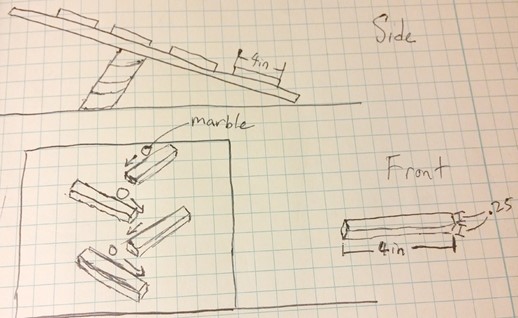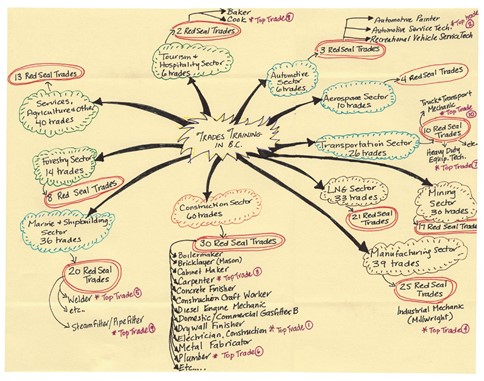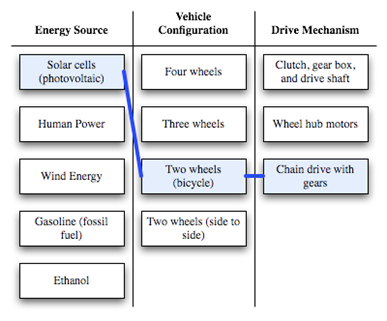Learning Task 3: Reading
Click play on the following audio player to listen along as you read this section.
Describe techniques for effective reading
Reading textbooks and learning materials cover to cover may not be the best use of your limited time. Understanding how to read effectively will not only save you time but will also provide you with a valuable strategy that you can use throughout your life.
The first step is preparing to read. Try to read earlier in the day when you are not tired, in a quiet place with minimal interruptions. Set goals for what you are going to accomplish during the session. If you have a lot to read, you may want to break down your sessions into 30- to 40-minute intervals with a break in between. Breaks are important because:
- Your retention of information actually decreases if you study for long periods of time without any breaks.
- Humans retain more information from the beginning and end of a study session. By taking a break during your study session, you will also retain more information from before and after the break.
- Breaks can restore your energy level and allow you to be more focussed when you return to your studies.
One strategy for effective reading is through a process called “survey, skim, and scan”:
Survey to find out if the information is usable:
- Read the title and subtitle.
- Turn to the table of contents and read through the headings.
- Flip through the material and look at the graphics, pictures, and other non-text content.
- Look at the style of the text (how is it written, whether there are references), its source (by whom it is written), and the date of publication.
Skim to find out how the information is organized:
- Read titles and headings.
- Read the first sentence of some of the paragraphs.
Scan to find specific information:
- Using the survey and skim techniques, quickly scan the pertinent sections of documents to locate the information you need.
- Read the information you need more thoroughly.
In cases where you are required to have an in-depth knowledge of a topic, the following strategies can be effective:
- Focus on the topics that are more important. Read the section more than once.
- Look up words that you are unfamiliar with.
- Underline words and phrases that are important.
- Take notes in your own words to summarize the important information. Remember that notes can be taken in many different formats, including diagrams, tables, and mind maps.
There are a lot of different strategies you can use to keep track of the important information as you read. For example, you can use a mnemonic device, which is a small phrase or rhyme made up to help you remember information, or a made-up word that employs the first letter of each word you need to remember. For example, the mathematical order of operations can be remembered by:
Please Excuse My Dear Aunt Sally
(parentheses, exponents, multiplication, division, addition, subtraction)
or
BOMDAS
(brackets, operations, multiplication, division, addition, subtraction)
Some other effective strategies are:
- Use sticky note papers or flags to mark key information.
- Mark up key sections in your own book with a highlighter or underline sections and write in the margins.
- Sketch a mind map or concept map to visually represent information.

Figure 3.1 Concept map 
Figure 3.2 Quick sketch 
Figure 3.3 Free-hand mind map - Create a diagram of concepts and terminology.

Figure 3.4 Concept combination table - Use a chart or table if this helps you order the information for later recall.
- Take quick audio notes using a voice recorder or application on your smart phone.
Once you’ve gone through your readings, take the time to reflect on what you’ve read. Do you understand the concepts and the reasons for learning this information? Are there any issues that are unclear? If so, make notes so that you can ask for clarification later in class or skim over the material again to see if you can find the answers on your own.
![]() Watch the video: 5 Active Reading Strategies for Textbook Assignments (7.5 minutes)
Watch the video: 5 Active Reading Strategies for Textbook Assignments (7.5 minutes)
![]() Now complete the Learning Task Self-Test.
Now complete the Learning Task Self-Test.
Self-Test
Self-Test 3
- Purchasing your books ahead of time and reading from cover to cover is an effective reading strategy for trades training.
- True
- False
- What is the best time of day to read?
- Whenever you can fit in the time
- In between classes (breaks and lunch hours)
- At night when everyone is sleeping and your home is quiet
- Early in the day when you are not tired and have minimal interruptions
- Which of the following strategies is best if you have a lot to read?
- Read in intervals of one to two hours with breaks in between.
- Set aside a few hours and complete the reading all at once.
- Read in intervals of 30 to 40 minutes with breaks in between.
- Divide the reading with a study partner and then share your notes with each other.
- Why is it important to include breaks in your study session?
- You may get hungry, thirsty, or require a trip to the washroom.
- You retain more information at the beginning and the end of a study session. This will mean that you’ll also retain more information from before and after the break.
- None of the above
- All of the above
- Learning strategies help you organize the information you are reading and can include notes, tables, diagrams, mind maps, and mnemonics.
- True
- False
- Which of the following is a strategy for active reading?
- Assess, organize, sort
- Read, review, revise
- Survey, skim, scan
- All of the above
- Taking notes in your own words can help you absorb what you are reading.
- True
- False
- Which of the following should you consider when you’re reflecting on what you’ve read at the end of a study session?
- Do you understand the concepts?
- Do you understand the reason for learning this information?
- Are there any issues that are unclear?
- All of the above.
- A mnemonic device is a small phrase or rhyme made up to help you remember information.
- True
- False
- Reading a textbook cover to cover is the best way to learn.
- True
- False
See the Answer Key in the back matter of the textbook for self-test answers.
Media Attributions
- “Line B-1: Learning Task 3” was recorded by BCcampus based on text written by Camosun College and licensed under a CC BY 4.0 licence.
- “Conceptmap” by Vicwood40 is licensed under a CC BY-SA 4.0 licence.
- “Slider Track Design Sketch” by Chong Tian Lin is licensed under a CC BY-SA 4.0 licence.
- “Free-hand mind map” by BC Industry Training Authority is licensed under a CC BY-NC-SA 4.0 licence.
- “High School Engineering Figure” by CK-12 Foundation is licensed under a CC BY-SA 4.0 licence.
- “R” icon by Nathan David Smith is licensed under a CC BY 3.0 licence.
- “5 Active Reading Strategies for Textbook Assignments” video by by Thomas Frank is licensed under the Standard YouTube licence.
- “Tick” icon by Lars Meiertoberens is licensed under a CC BY 3.0 licence.

